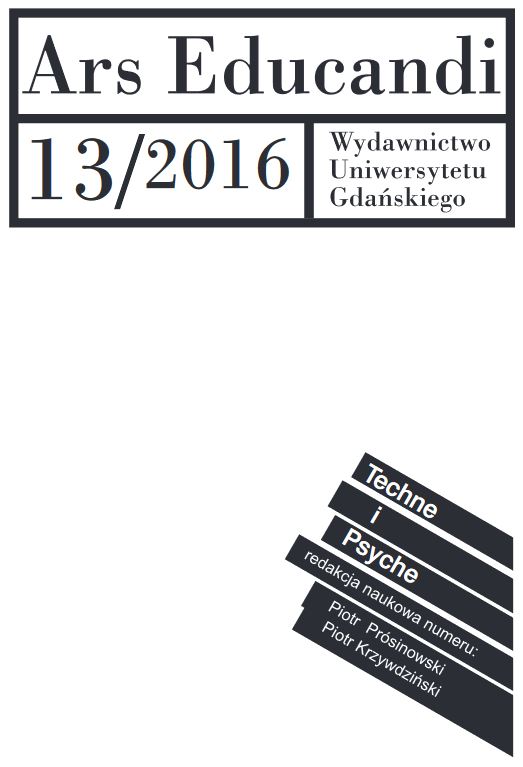Teaching and Learning Context in the Augmented Reality Environment
DOI:
https://doi.org/10.26881/ae.2016.13.02Słowa kluczowe:
nauczanie, uczenie się, rozszerzona rzeczywistość, technologiaAbstrakt
The article presents Augmented Reality (AR) as a step between reality and virtual reality for the benefit of education. After some introductory examples of where AR is heading, the technology itself will be explained. Then, I describe the modules of the AR that are developed and how it can be used in university courses and activities. AR is the mid-point on a continuum between the real physical world around us and the virtual digital world online superimposing information on our sensory experiences as we move through time and space. Viewing physical objects through a mobile’s camera, AR uses image recognition, geo-location, the device’s accelerometer, and online databases to provide information relevant in time and space to the user. Research continues into different interaction methods and display possibilities making engagement with online data more natural and intuitive. The article explores current research in AR and associated technologies in order to understand possibilities for learners today and in the future. This literature review focuses on AR for learning that utilizes mobile, context-aware technologies (e.g., smartphones, tablets), which enable participants to interact with digital information embedded within the physical environment. Summarizing research findings about AR in formal and informal learning environments (i.e., schools, universities, museums, parks, zoos, etc.), emphasis is placed on the affordances and limitations associated with AR as it relates to teaching, learning, and instructional design. As a cognitive tool and pedagogical approach, AR is primarily aligned with situated and constructivist learning theory, as it positions the learner within a real-world physical and social context while guiding, scaffolding and facilitating participatory and meta-cognitive learning processes such as authentic inquiry, active observation, peer coaching, reciprocal teaching and legitimate peripheral participation with multiple modes of representation.

English proofreading: Anna Moroz-Darska
Modernisation of the journal's operations and translation into the English language of articles published in Ars Educandi in 2012-2017 were financed with funds from the Ministry of Science and Higher Education as a part of the task Science Promotion Activity (pl. DUN).
The task ‘The implementation of the editorial module on the platform of Uniwersyteckie Czasopisma Naukowe – a system facilitating the editing and management of the academic journal Ars Educandi‘ was financed as a part of contract 661/P-DUN/2018 of 12.06.2018 from funds of the Ministry of Science and Higher Education designated for the promotion of science.
The task ‘The creation of a modern online version of the academic journal Ars Educandi through the implementation of the publication module on the platform of Uniwersyteckie Czasopisma Naukowe and the handling of international indexing databases’ was financed as a part of contract 661/P-DUN/2018 of 12.06.2018 from funds of the Ministry of Science and Higher Education designated for the promotion of science.
The task ‘Preparation of the English language version of the last 6 annual issues (2012-2017) of the academic journal Ars Educandi and their publication online’ was financed as a part of contract 661/P-DUN/2018 of 12.06.2018 from funds of the Ministry of Science and Higher Education designated for the promotion of science.

 Uniwersyteckie Czasopisma Naukowe
Uniwersyteckie Czasopisma Naukowe




